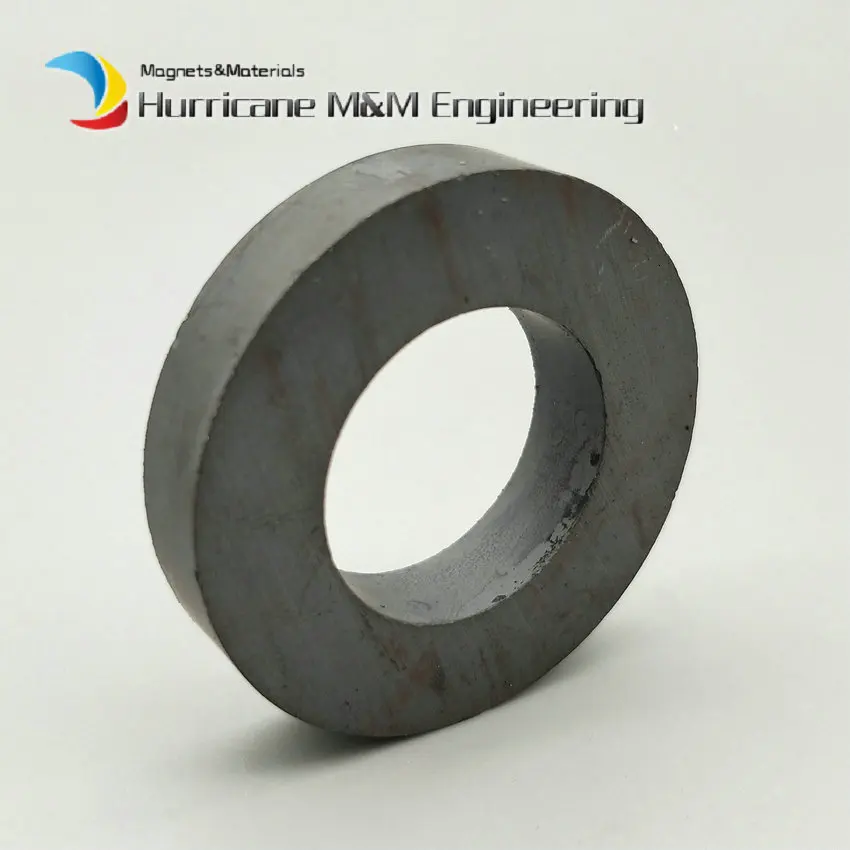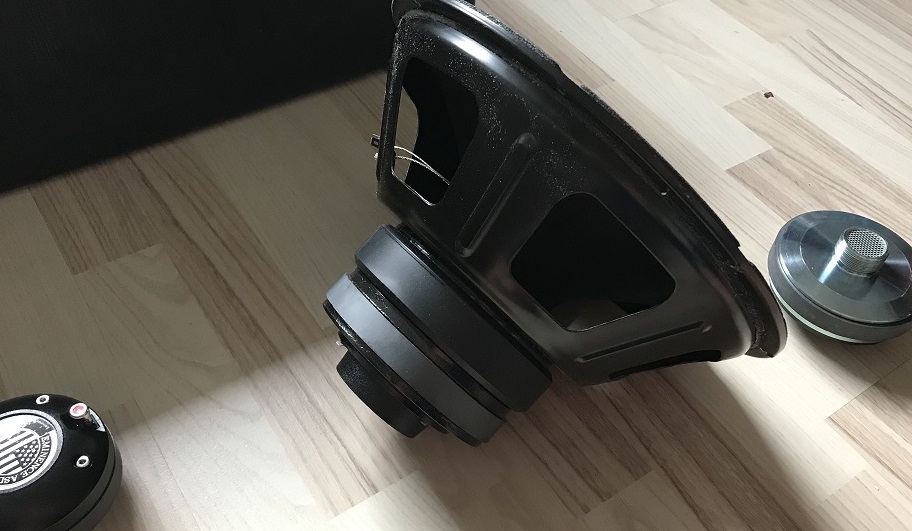Can it improve speaker/driver quality if I will attach addition magnet to it back?
How it will affect vintage speaker with lower magnet?
Also find it hard to remove the magnet from not needed drivers (any size) (better to buy pair).


How it will affect vintage speaker with lower magnet?
Also find it hard to remove the magnet from not needed drivers (any size) (better to buy pair).


Last edited:
No.
Speakers are sold as systems. Increasing B, magnetic field, if possible, could make the cone tear the surround at lower current. Increase the impedance, possibly. Random changes cause random sounds, instead of linear response to a low distortion signal. Testing your theory would be time consuming & expensive. Microphone, anehoic chamber, sweep signal source, software. Many multiway speaker builders don't even buy all that kit.
Speakers are sold as systems. Increasing B, magnetic field, if possible, could make the cone tear the surround at lower current. Increase the impedance, possibly. Random changes cause random sounds, instead of linear response to a low distortion signal. Testing your theory would be time consuming & expensive. Microphone, anehoic chamber, sweep signal source, software. Many multiway speaker builders don't even buy all that kit.
The magnet on the rear of some speaker drivers is a bucking magnet, there to reduce the external magnetic field around the driver, by being a magnet of reversed field to the main magnet. This was important in the days of cathode ray displays for television and computers where magnetism distorted the image and colours, but serves no purpose anymore AFAIAW.
Would this “No” also apply to coaxials? Will the compression driver when it have its own magnet attached to the main magnet negatively impact the low frequency driver performance? And will the low frequency main magnet negatively impact the HF magnet flux? Such as in this case with Eminence screw-ons where you theoretically have control over the matching upfront? Is there a polarity risk as well, some magnets set in opposite flux?

Last edited:
The difference between your photo of a coaxial and the original picture of a single driver with a bucking magnet is the additional pole pieces for the extra voice coil. One would hope that the designer of the coaxial driver knew what they were doing and chose magnetic polarity accordingly.Would this “No” also apply to coaxials?
Last edited:
What about vintage drivers that magnet power weaker then original by the time?
or cheap drivers with small magnet?
or cheap drivers with small magnet?
A magnet stuck on the back of the centre pole piece isn't going to make any difference to the strength of the magnetic field between the poles where the voice coil is.What about vintage drivers that magnet power weaker then original by the time?
or cheap drivers with small magnet?
The difference between your photo of a coaxial and the original picture of a single driver with a bucking magnet is the additional pole pieces for the extra voice coil. One would hope that the designer of the coaxial driver knew what they were doing and chose magnetic polarity accordingly.
Good point for most coaxials where the product vendor assembles the whole for you but my question was maybe more related to the Eminence screw-on types where the buyer (me) picks the HF drivers randomly and may switch based on application. In the picture you can see three different types of screw-ons all which will fit mechanically and proven acoustically I’m just wondering if each have different impact on low end performance due to possible different magnetic flux and polarity. For the biggest compression driver (the one attached in the picture) the magnet are of exact same type and I can “feel” they attract while screwing it in while the two others feels more neutral. Maybe a off topic special case though.
The 'stray' magnetic field outside of the functional magnetic circuit focused (constrained) by the inner and outer pole pieces is not really relevant to the behaviour of the drivers. What is important is the field across the voice coil which is focussed by the pole pieces. Magnets outside of that circuit make diddly squat* difference. ("Diddly squat" is a technical term meaning bugger all.)
There were some speaker builder who modified exiting OEM drivers by using "PiggyBack " magnets.
I've done it myself as an experiment, I didn't notice much difference in my own implementations
I've done it myself as an experiment, I didn't notice much difference in my own implementations
Good point for most coaxials where the product vendor assembles the whole for you but my question was maybe more related to the Eminence screw-on types where the buyer (me) picks the HF drivers randomly and may switch based on application. In the picture you can see three different types of screw-ons all which will fit mechanically and proven acoustically I’m just wondering if each have different impact on low end performance due to possible different magnetic flux and polarity. For the biggest compression driver (the one attached in the picture) the magnet are of exact same type and I can “feel” they attract while screwing it in while the two others feels more neutral. Maybe a off topic special case though.
Sorry if I do not understand your question
The magnet that screw inside the speaker hole contain inside a tweeter, and the woofer cap not available or made of some fabric material or
Also the screw tweeters use for horn drivers
I agree with johnmath.
The additional magnet will make little difference because its not placed in the magnetic circuit.
The additional magnet will make little difference because its not placed in the magnetic circuit.
Sorry if I do not understand your question
The magnet that screw inside the speaker hole contain inside a tweeter, and the woofer cap not available or made of some fabric material or
Also the screw tweeters use for horn drivers
If you look at the pic I posted it’s a traditional compression driver with its own magnet, but the whole thing is screwed into the bass driver also with its own magnet but a open pole peace for the horn. Look up coax if your more interested in the general concept, my question was just a side track of the original thread as I was just curious to know if it matters for the bass performance in a screw-on type coaxial what compression driver I choose to screw on. I guess not then, and this is good. This question is only applicable to the Eminence coaxials, I have never seen any other have this screw on type where you can use tweeters of your own preference, usually coaxials come with the compression driver sharing magnets with the bass as a complete system, sometime also with dedicated neo magnets but still as one system. Sorry for derailing the thread.
Yes, I also did measurements after I thought I could take all my old speakers and make a set of really good ones 😛I've done it myself as an experiment, I didn't notice much difference in my own implementations
Can it improve speaker/driver quality if I will attach addition magnet to it back?
I once bought some 12" drivers that seemed a bit weak / didn't meet spec.
Advertised:
Qts 0.40
What I measured (on a test baffle, after 20 hours of playing bass tones):
Qts 0.5201
After I stuck an additional magnet on it:
Qts 0.47
...so yes, I made a measurable difference with an additional magnet, but the change was fairly small.
Some speaker rebuilders have the machinery to Remagnetize a driver's magnet. Ferrite magnets can and Do lose flux over time A rather short time actually 10 years being enough to show measurable losses .
There is Reason Ferrite is a Dirt Cheap mag material and why most makers use it.. $$$ 😉.
There is Reason Ferrite is a Dirt Cheap mag material and why most makers use it.. $$$ 😉.
Speaking of magnets life cycle. You say that a ferrite magnets starts to lose some flux after 10 years. What is considered the death of a ferrite magnet, are they recyclable and how is the environmental impact of ferrite vs say neo.
I understand neo magnets is a limited natural resource while ferrite magnets is made from a chemical smelting process of iron and sink but which have the least environmental impact looking at the production process energy and raw material consumption and its recycle strategy, and life time of course. If money isn’t an issue should I buy ferrite anyway from a environmental perspective? And are neo speakers really better or just lighter?
I understand neo magnets is a limited natural resource while ferrite magnets is made from a chemical smelting process of iron and sink but which have the least environmental impact looking at the production process energy and raw material consumption and its recycle strategy, and life time of course. If money isn’t an issue should I buy ferrite anyway from a environmental perspective? And are neo speakers really better or just lighter?
The magnet and pole pieces of a loudspeaker driver form a closed magnetic circuit, if somewhat imperfect. An additional magnet on the rear of the driver's outer pole piece is on the outside of that closed magnetic circuit, except perhaps for a small amount of leakage coupling. Adding a magnet in this manner with have little effect on the BL product at the voice-coil, for example.
Those extra magnets were added to speakers to allow close placement of the speaker next to an old CRT style TV monitor, which was sensitive to and adversely affected by stray magnetic fields. Since this magnet is outside of the speaker's magnetic circuit, it won't do anything for the speaker itself at all except increase its weight.
- Home
- Loudspeakers
- Multi-Way
- Speaker magnet mod / Attaching addition magnet to the driver, question